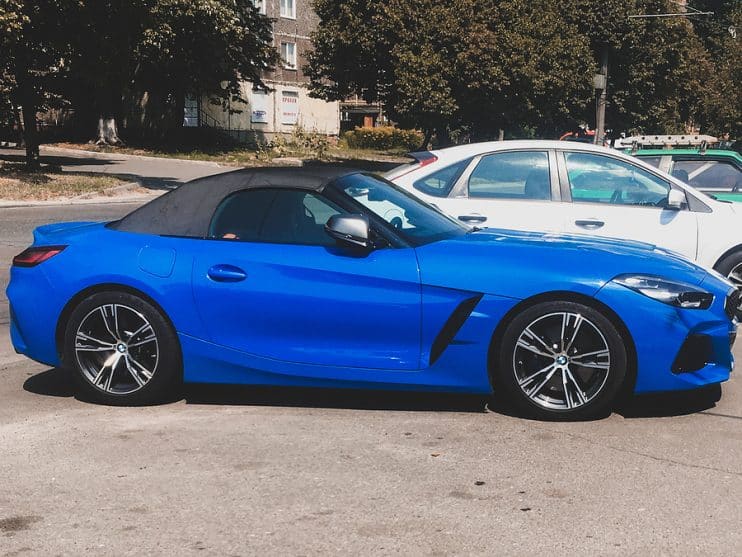
The BMW Z4 is a stylish, high-performance two-seater sports car that BMW has produced since 2002. Now in its third generation since a redesign in 2018, the Z4 continues BMW’s tradition of making luxury vehicles that excel in speed and handling.
The current Z4 features a sporty design with a retractable hardtop convertible option. Under the bonnet, it packs turbocharged 2.0-litre four-cylinder and 3.0-litre six-cylinder engine options for fast and responsive acceleration. The Z4 sticks to its rear-wheel-drive roots for agile handling while offering both manual and automatic transmission variants so drivers can choose the level of control they prefer.
The Z4 has many of BMW’s latest technology features, such as the premium iDrive infotainment system, advanced driver assistance, and high-end audio. With a blend of performance, comfort and elegant design, even entry-level Z4s feature 18-inch alloy wheels, cruise control, heated seats and front and rear parking sensors.
Despite all this, the BMW Z4 has some common issues worth being aware of. We’ll take you through them.
Table of contents:
- Common faults that are reported with the BMW Z4?
- Is the Z4 expensive to maintain or repair?
- Is the Z4 reliable?
Common faults that are reported with the BMW Z4
The BMW Z4 is a roadster known for its sleek styling and exhilarating driving dynamics. However, some common problems have cropped up for Z4 owners over the years from unexpected airbag deployment to coolant leaks. Here are some of the most common headaches Z4 drivers have encountered.
Engine misfiring
Some Z4 owners have raised concerns about their BMW engines misfiring when their cars are just sitting still. This hiccup is often due to a faulty DISA valve, and you might also notice a rattling noise from the engine. Luckily, replacing the DISA valve is usually all it takes to fix this issue.
Taking prompt action on misfiring concerns is crucial for restoring smooth engine performance and maintaining overall engine reliability. It will help to ensure your Z4 continues to run smoothly and efficiently.
Convertible top issues
The convertible top, a feature Z4 drivers love to showcase, can become a headache, especially for those with the 2003 model. After a few years, the initially smooth operation of the convertible top often becomes sluggish and eventually grinds to a complete halt. This issue poses a challenge as there’s no universal solution to the problem, and attempts to replace the hydraulic system and motor don’t always guarantee success.
On a different note, while not a major mechanical concern, a squeaky roof can irritate Z4 owners. Regular maintenance, wiping the roof down, using a cover, or storing the car in a garage can prevent this annoyance. In cases where the roof stops halfway, it’s often due to water seeping into trunk seals, causing damage to the roof’s hydraulics and electronics. Fixing this may involve replacing damaged parts and addressing any underlying seal problem.
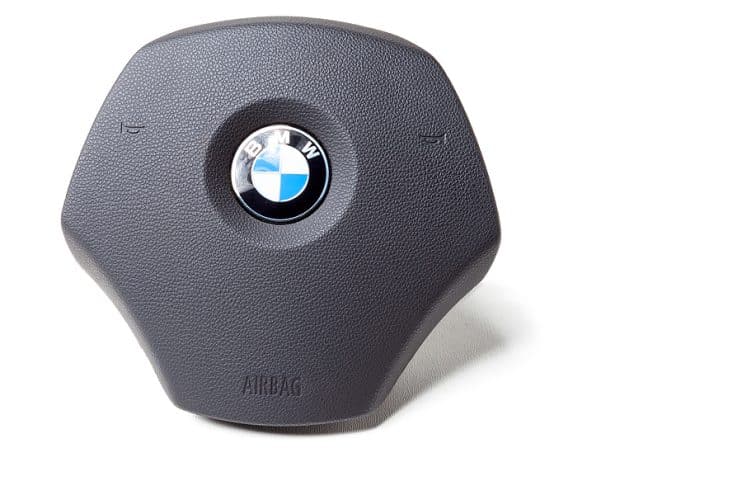
Airbags
Some Z4 model airbags have gained a reputation for deploying unexpectedly, posing a severe safety risk. The concern is that these airbags might inflate without any warning during a drive, potentially leading to accidents and causing injuries to the driver.
If you want to minimise the risk, it’s advisable to steer clear of the 2007 Z4 model, as it is more susceptible to developing this problem.
Steering issues
Drivers of the 2005 Z4 have reported issues with the steering, including clunking steering wheels, sticky steering, and steering drifts.
The clunking steering wheel affects certain BMW Z4 models from 2003 to 2008. Drivers report feeling a clunk in the steering wheel when applying brakes. In other cases, they hear a cracking noise when driving in reverse – caused by faulty front control arm bracket bushing.
Brake lines
Rust is a common issue in luxury cars like the BMW Z4, especially affecting brake lines. If your Z4 has clocked over 40,000 miles, checking the brake lines for potential rust and corrosion is a good idea.
Dealing with rust on brake lines is a typical problem with the Z4. Interestingly, it doesn’t necessarily depend on the car’s age; it can happen in low- and high-mileage vehicles. Fixing or replacing these brake lines can be pricey because removing and installing them is tricky. While not a particular problem, it occasionally pops up in Z4 models.
Coolant leaks
Drivers of certain BMW models have reported coolant leaks, especially in the 2003 to 2005 Z4 models. These leaks can lead to engine overheating, possibly damaging engine components and even causing engine failure. Signs of a coolant leak may include sudden temperature spikes and engine overheating.
Fixing the coolant leakage issue can be pricey, involving replacing parts like upper and lower hoses. Flushing the system and replacing the coolant may also be necessary. Drivers who don’t catch the problem early on often end up spending more on repairs for components damaged by overheating.
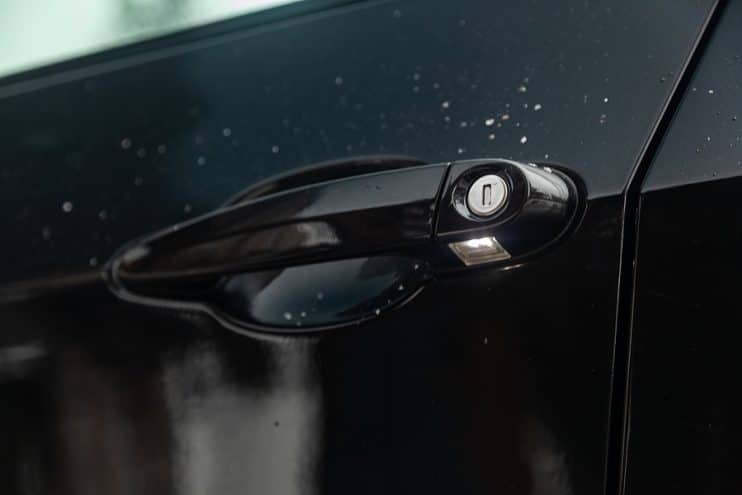
Defective door locks
Complaints about interior and exterior door handles malfunctioning in some BMW Z4s have surfaced. Some drivers experience difficulties opening the doors, while others report doors opening unexpectedly while the vehicle moves. The 2003 Z4 is particularly notorious for this problem.
Replacing the handles is cheap, and a door latch isn’t expensive, thankfully. However, it is crucial to address this issue quickly to prevent it from escalating to a point where doors open independently, especially during high-speed drives.
Limp mode
A frequent problem with the BMW Z4 is engine misfiring. In such cases, the car switches to limp mode to protect the catalytic converter from potential damage caused by either too much or too little fuel. In this mode, the vehicle safeguards the transmission by shutting down its electronic functions.
If there’s an issue with the engine’s timing system, it could get out of sync, prompting the car to enter limp home mode as a precautionary measure to prevent significant damage. This recall is for Z4s manufactured between September 1, 2009, and November 30, 2011.
Is the Z4 expensive to maintain or repair?
Keeping a BMW Z4 can vary in cost, taking into account factors like fuel efficiency, CO2 emissions, insurance, and servicing. The Z4 comes with different engine options, and their fuel efficiency varies. The four-cylinder models (18i, 20i, and 28i) are more fuel-efficient, achieving up to 41.5mpg, while the larger six-cylinder engines (23i and 30i) consume more fuel, with ratings around 34.4mpg and 34.0mpg. The higher-performance 35i and 35is models manage about 31.4mpg.
Insurance groups for the Z4 are generally high, and servicing costs at a BMW dealer can be expensive. However, independent specialists may offer more cost-effective options, and shopping around for new or used BMW Z4 parts for repairs and maintenance can save money.
Is the Z4 reliable?
Based on info from thecarexpert.co.uk, the BMW Z4 is said to be pretty reliable, according to data from their insurance partner. However, this includes all Z Series models, so it covers Z4 generations and older models like Z1, Z3, and Z8.
The most expensive reported problems involve the braking system, with an average cost of about £300. 2003, 2005, and 2007 models tend to have the most complaints, so it may be worth avoiding BMW Z4s from those years if you want fewer issues.

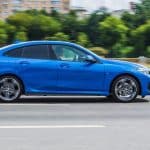

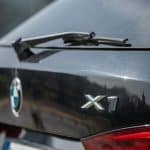






.png)